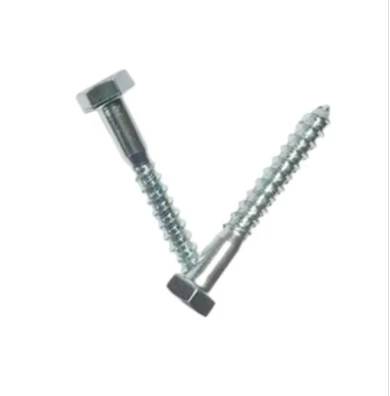дек. . 13, 2024 23:24 Back to list
Specifications for Expansion Bolt Sizes Measured in Millimeters
Understanding Expansion Bolt Sizes A Comprehensive Guide in Millimeters
Expansion bolts are essential fastening devices used in construction and engineering applications. They provide a secure means of anchoring structural elements to various surfaces, including concrete, brick, and masonry. With a wide range of sizes and types available, selecting the correct expansion bolt is crucial for ensuring the integrity and safety of any project. This article provides an overview of expansion bolt sizes in millimeters (mm), their applications, and key considerations during selection.
What are Expansion Bolts?
Expansion bolts consist of a bolt with a conical end and an expandable sleeve. When the bolt is turned, it pulls the cone into the sleeve, causing it to expand against the sides of the hole it is inserted into. This mechanism creates a strong grip on the material, allowing it to bear significant loads without loosening over time.
Common Sizes of Expansion Bolts
Expansion bolts come in various sizes, with dimensions generally specified in millimeters. The most common metric sizes include
- M6 (6mm diameter) - M8 (8mm diameter) - M10 (10mm diameter) - M12 (12mm diameter) - M16 (16mm diameter) - M20 (20mm diameter)
Understanding Size Designations
The M designation stands for metric, and the number that follows indicates the nominal diameter of the bolt. The length of the bolt can vary significantly and is typically available in increments of 20mm or 25mm. When selecting the length, it's essential to consider the thickness of the material being fastened and the type of expansion bolt used, as some require more embedded length than others for optimal performance.
Load Ratings and Applications
Different sizes of expansion bolts come with varying load ratings, which dictate their applicability in specific projects. Generally, larger diameter bolts can support heavier loads. For instance
expansion bolt sizes in mm

- M6 bolts may be suitable for light-duty applications, such as securing small fixtures or brackets. - M10 to M12 bolts are often utilized in medium-duty applications, such as installing shelves or heavier appliances. - M16 and M20 bolts are commonly employed in heavy-duty applications, including structural support or in industrial settings.
When selecting an expansion bolt size, it's vital to refer to the manufacturer's load specifications to ensure that it meets the requirements of the intended application.
Installation Considerations
The effectiveness of expansion bolts greatly depends on correct installation. Key considerations include
1. Hole Diameter The installation hole must be drilled to a diameter that matches the expansion bolt size. This ensures proper expansion of the sleeve and a tight fit. 2. Depth of the Hole The depth should be adequate to accommodate the entire bolt length, plus an additional margin to allow for expansion. 3. Material Condition The substrate must be in good condition without cracks or deterioration, as this could affect the bolt's ability to hold.
Selecting the Right Type of Expansion Bolt
There are various types of expansion bolts, including wedge anchors, sleeve anchors, and drop-in anchors. Each type is designed for specific materials and load conditions. For example
- Wedge anchors are ideal for concrete applications and provide a high load capacity due to their unique expansion mechanism. - Sleeve anchors can be used in both concrete and masonry, offering versatility for various projects. - Drop-in anchors are typically used for flush mount applications, providing a clean finish and can be removed and reused.
Conclusion
Choosing the right expansion bolt size in millimeters is essential for the success of any construction or renovation project. A thorough understanding of the different sizes, their load ratings, and proper installation techniques will ensure that your application is both safe and durable. Whether you are a seasoned contractor or a DIY enthusiast, taking the time to select the right expansion bolt can make all the difference in the performance and longevity of your installation. Always refer to manufacturer specifications and guidelines to guarantee optimal results.


